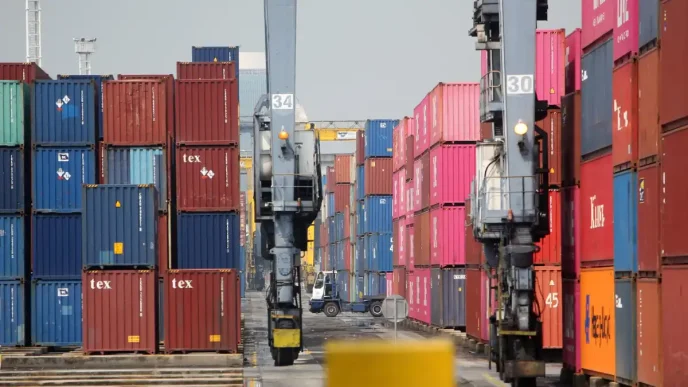Thailand’s Health Ministry is intensifying efforts to enforce a regulation mandating the display of medicine prices at hospitals and clinics, a move aimed at enhancing transparency and protecting consumers from inflated costs. Announced as part of broader healthcare reforms, the policy has sparked a contentious debate between regulators seeking affordability and a pharmaceutical industry wary of profit margins. As the government doubles down on compliance, questions remain about the feasibility of enforcement and the long-term impact on Thailand’s healthcare landscape.
A Policy Rooted in Consumer Protection
In a bid to address longstanding concerns over opaque pricing in Thailand’s healthcare sector, the Ministry of Public Health has reaffirmed its commitment to a regulation requiring all hospitals, clinics, and pharmacies to publicly display the prices of medicines. The rule, initially introduced to curb overcharging and ensure patients are informed of costs before treatment, has faced uneven implementation since its inception. Recent statements from ministry officials underscore a renewed push for strict adherence, with inspections and penalties looming for non-compliant entities.
The policy targets a critical issue in Thailand’s hybrid healthcare system, where public and private providers often operate under different pricing structures. For many patients, especially those relying on out-of-pocket payments, unexpected costs for essential drugs can be financially crippling. By mandating price transparency, the government aims to empower consumers to make informed decisions and foster competition among providers to keep costs in check.
According to local reports, the ministry has already conducted spot checks in major urban centers like Bangkok and Chiang Mai, identifying several private clinics that failed to display prices as required. While specific violators have not been named publicly, officials have signaled that fines and potential license suspensions await those who continue to flout the rules. This crackdown comes amid growing public frustration over healthcare affordability, particularly for chronic conditions requiring long-term medication.
Industry Resistance and Economic Concerns
Despite the policy’s consumer-friendly intent, it has met with significant resistance from segments of the pharmaceutical and private healthcare sectors. Industry representatives argue that mandatory price displays could undermine their business models, particularly for smaller clinics and pharmacies already grappling with thin profit margins. They contend that the costs of sourcing, storing, and dispensing medicines vary widely due to factors like import tariffs, distribution challenges, and fluctuating exchange rates—variables that make standardized pricing difficult.
Thailand, as a hub for medical tourism, also faces unique pressures. Private hospitals catering to international patients often charge premium rates for drugs and services, a practice that has drawn criticism for creating a two-tiered system. Industry stakeholders warn that enforcing uniform price displays could deter foreign patients, who contribute significantly to the country’s healthcare revenue—estimated at billions of Thai Baht annually. This economic dimension adds another layer of complexity to the debate, as the government must balance domestic affordability with the lucrative medical tourism market.
Moreover, some pharmaceutical companies have expressed concerns that transparent pricing could trigger a race to the bottom, where providers undercut each other to attract patients, potentially compromising the quality of drugs or services. While no specific evidence supports this fear, the tension between profitability and accessibility remains a sticking point in negotiations between regulators and industry players.
Enforcement Challenges in a Fragmented System
One of the most pressing hurdles for the Health Ministry is the sheer scale of enforcement. Thailand’s healthcare landscape is fragmented, comprising thousands of public hospitals, private clinics, and rural pharmacies, many of which operate with limited oversight. Ensuring compliance across such a diverse network requires substantial resources, including trained inspectors and a robust reporting mechanism for violations—capabilities that critics argue the ministry currently lacks.
Rural areas, in particular, pose a logistical challenge. Small pharmacies in remote provinces like Isaan or the southern peninsula often lack the digital infrastructure to update and display prices consistently. For these providers, the cost of compliance—whether through printed price lists or digital boards—could strain already tight budgets. The ministry has yet to outline specific exemptions or support mechanisms for such cases, leaving uncertainty about how the policy will be applied outside urban centers.
Public health advocates, while supportive of the regulation’s intent, have also raised concerns about its scope. Some argue that price displays alone will not address deeper systemic issues, such as the influence of pharmaceutical companies on drug pricing or the lack of generic alternatives in the market. Without complementary measures—like subsidies for essential medicines or stricter controls on drug markups—the policy risks being seen as a symbolic gesture rather than a transformative reform.
Regional Context and Comparative Lessons
Thailand’s push for medicine price transparency is not occurring in isolation. Across Southeast Asia, governments are grappling with similar challenges in balancing healthcare affordability with industry interests. In Malaysia, for instance, authorities have implemented price caps on certain essential drugs, though enforcement remains inconsistent. Vietnam, meanwhile, has focused on expanding state-subsidized healthcare to reduce out-of-pocket costs, albeit with mixed results due to bureaucratic inefficiencies.
These regional examples offer potential lessons for Thailand. Malaysia’s experience suggests that transparency must be paired with regulatory teeth—such as price controls or penalties—to prevent providers from simply ignoring mandates. Vietnam’s model, on the other hand, highlights the importance of addressing root causes like supply chain costs and access to generics, rather than relying solely on consumer-facing measures like price displays.
Thailand’s unique position as a middle-income country with a strong pharmaceutical manufacturing base also gives it leverage to negotiate better drug prices directly with suppliers. Some analysts suggest that the government could use the current policy as a stepping stone toward broader reforms, such as bulk procurement of generics or incentives for local drug production. However, such measures would require political will and coordination across multiple ministries, a feat that has proven elusive in the past.
Public Response and Political Implications
The Thai public’s response to the policy has been mixed. Urban middle-class families, who often bear the brunt of high private healthcare costs, have largely welcomed the move, viewing it as a step toward greater accountability. Social media discussions in Thailand reflect a growing demand for fairness in healthcare pricing, with many users sharing personal stories of being overcharged for basic medications.
However, skepticism persists among lower-income groups and rural residents, who question whether the regulation will translate into tangible savings. For many, the real barrier to affordable healthcare lies not in price transparency but in access to quality services and subsidized drugs—issues that the current policy does not directly address. This disconnect could pose a political risk for the government, particularly if public expectations are raised only to be unmet by slow or uneven implementation.
The policy also arrives at a time of heightened scrutiny over the Thai government’s handling of public health issues. With recent debates over hospital funding and the rollout of universal healthcare initiatives, the price display regulation is being seen by some as a test of the administration’s commitment to systemic reform. Failure to deliver measurable results could fuel criticism that the government is prioritizing optics over substance.
Looking Ahead: A Balancing Act
As Thailand’s Health Ministry presses forward with its medicine price display rule, the road ahead appears fraught with challenges. Striking a balance between consumer protection and industry sustainability will require not only rigorous enforcement but also dialogue with stakeholders to address legitimate concerns. The policy’s success will likely hinge on the government’s ability to adapt its approach—whether by offering support for small providers or pairing transparency with deeper reforms to control drug costs.
For now, the debate over medicine pricing serves as a microcosm of broader tensions in Thailand’s healthcare system: the push for equity versus the realities of a market-driven economy. As inspections continue and penalties loom, both patients and providers are watching closely to see whether this regulation will mark a turning point or become another well-intentioned but under-delivered promise.
With affordability remaining a pressing concern for millions of Thais, the stakes could not be higher. How the government navigates this complex terrain in the coming months may well shape public trust in its ability to deliver on healthcare reform—and set a precedent for similar efforts across the region.
















